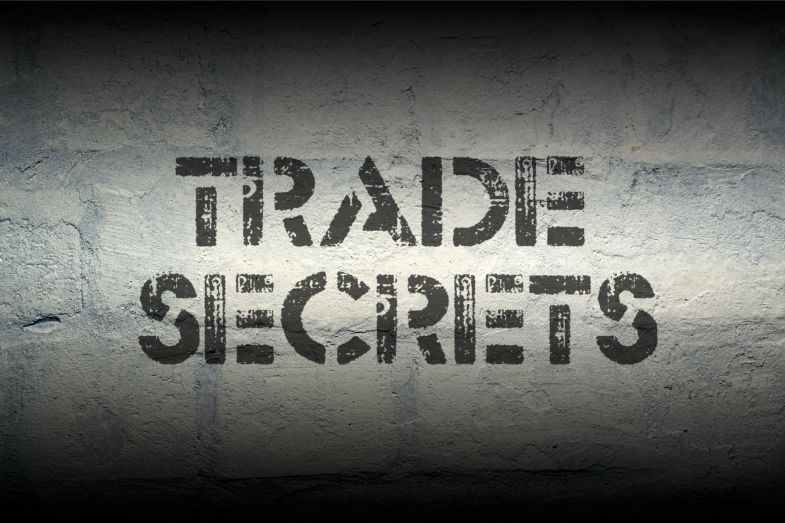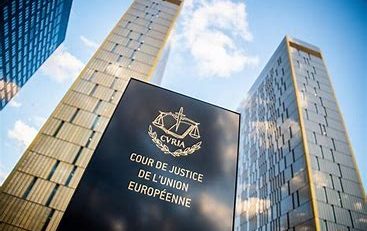TRADE SECRETS: What You Need to Know.
Introduction
In short, a trade secret is a form of intellectual property (IP) rights on confidential information which may be sold or licenced, giving an enterprise a valuable competitive advantage.
Trade secrets have been usefully described as:
… information which, if disclosed to a competitor, would be liable to cause real (or significant) harm to the owner of the secret … It must be information used in a trade or business and the owner must limit the dissemination of it or at least not encourage or permit widespread publication.
Qualifications for a trade secret
Overall, to qualify as a trade secret, information must be:
- Commercially valuable exactly because it is a secret,
- Be known to a very limited group of persons and
- Be subject to reasonable steps taken by the rightful holder of such information to keep it secret, such as using confidentiality / non-disclosure agreements between business partners and employees, kept it in safe storage.
Types of Trade Secrets
These secrets encompass a broad range of information such as, amongst others:
- Recipes and the ingredients used
- Engineering information
- Methods, processes
- Know-How
- Source codes
- Client lists
- Any information relating to a company’s business
- Formulas
- Financial information
- Scientific, technical information
How Trade Secret Protection Works
Depending on the legal system where a business is functioning, the legal protection of trade secrets forms part of the general concept of protection against unfair competition or is based on specific provisions or case law on the protection of confidential information. Determining a violation (or not) of a trade secret depends on the merits of each individual case, generally unfair practices in relation to the secret, commercial or industrial espionage, breach of contract and breach of confidence.
Companies should take preventive measures to protect trade secrets against theft or misappropriation, including:
• Non-disclosure agreement (NDA): employees and business partners should sign a non-disclosure agreement that prevent them from disclosing a company’s confidential information.
• Non-compete agreement (NCA): employers should ask employees, contractors and consultants to sign a non-compete agreement to prevent them from entering in competition when their employment/service agreement ends.
• Robust IT security infrastructure.
• Controlling the accessibility of important documents.
The Position in Cyprus
Law No. 164(I)/2020 (the “Law”) on the protection of undisclosed know-how and business information (trade secrets) against their unlawful acquisition, use and disclosure came into force in Cyprus on the 27th of November 2020, incorporating the provisions of Directive (EU) 2016/943 on the protection of undisclosed know-how and business information (trade secrets) against their unlawful acquisition, use and disclosure that basically aims to harmonise national laws regarding measures, procedures and remedies against the unlawful acquisition, use and disclosure of trade secrets.
Section 2 of the Law defines a ‘trade secret holder’ as ‘any natural or legal person lawfully controlling a trade secret’ and a ‘trade secret’ is considered as information that meets the criteria noted above.
For the Law to be applied, it must be proven that the trade secret has afforded a competitive advantage to the holder, who must also demonstrate that he/it has taken ‘reasonable steps’ to ensure the secrecy of the information. What ‘reasonable steps’ may be considered is quite a challenge and is a proportionate one; large companies are expected to take more robust protective measures than a small, medium sized one.
Legal Actions in Case of Violation
The Law provides a variety of measures that a trade secret holder can take against the infringer.
The competent court, can, at the request of the holder order any of the following provisional and precautionary measures against the alleged infringer:
1. The cessation of or, as the case may be, the prohibition of the use or disclosure of the trade secret on a provisional basis.
2. The prohibition of the production, offering, placing on the market or use of infringing goods, or the importation, export or storage of infringing goods for those purposes.
3. The seizure or delivery up of the suspected infringing goods, so as to prevent their entry into, or circulation on, the market.
Additionally, the court can, upon the request of the injured party, order an infringer who knew or ought to have known that he, she or it was engaging in unlawful acquisition, use or disclosure of a trade secret, to pay the trade secret holder damages appropriate to the actual prejudice suffered as a result of the unlawful acquisition, use or disclosure of the trade secret.
The liability for damages of employees towards their employers for the unlawful acquisition, use or disclosure of a trade secret of the employer may be limited, where they act without intent.
Finally, the Law imposes sanctions on any person who fails or refuses to comply with any measures adopted pursuant to the Law and may be liable to a fine up to €35.000 or imprisonment up to three years, or both.
6 of the Most Famous Trade Secrets
1. Kentucky Fried Chicken
The secret ingredients for KFC’s original recipe were originally kept in Colonel Sanders’ head. He eventually wrote the recipe down, and the original handwritten copy is in a safe in Kentucky. Only a few select employees know the recipe, and they are bound by a confidentiality agreement.
For better protection, two separate companies blend a portion of the herb and spice mixture. Then it is automatically processed to standardize the blending before it is sent to the restaurants.
2. Coca-Cola
Coca-C0la made a choice to brand the a trade secret instead of patenting it, which would have lead to the disclosure of the ingredients. Since one of those ingredients may have been cocaine, Coca-Cola decided to keep the recipe as confidential information. This trade secret has spawned rumors of its own. One is that the recipe contains bugs or insects. Another is that two employees each know only half the recipe or that only two people know the combination to the safe where it is stored.
In case you doubt it, corporate espionage is real. In 2006, and employee and two accomplices stole the formula and tried to sell it to Pepsi. Pepsi blew the whistle and let Coke officials know what was happening. The employee and friends were arrested.
3. Listerine
Listerine is a popular example of a trade secret used in law schools.
The inventor licensed the secret formula to Lambert Pharmaceuticals. Lambert (now Pfizer) made royalty payments to the inventor’s family for over 70 years, even though the formula was revealed during that time.
Pfizer tried to stop payments after paying over $22 million for a formula that was no longer secret. It sued, saying it was no longer responsible for licensing fees. The court ruled that the contract did not stipulate that payments could be stopped if the trade secret was legitimately discovered by others, especially since Pfizer had acquired the formula when it was still secret and derived competitive advantage from it.
4. WD-40
Originally WD-40 was developed to prevent corrosion. The chemist kept the formula secret and sold it a few years later. Even now, it is the company’s only product.
Like Coca-Cola, the secret formula has never been patented, so competitors could not discover what is in it. The company does reveal what is NOT in the formula, including a statement that there are no known cancer-causing agents.
The formula has been in a bank vault for years, only taken out to change banks, and, once, to be carried by the company’s CEO to celebrate its 50th anniversary. The CEO wore armour and rode on horseback.
The formula is mixed in three different cities around the globe before being given to the manufacturing partners. The formula has been reverse engineered, but the trade secret is kept for marketing purposes.
5. McDonald’s Big Mac Special Sauce
The special sauce recipe was a trade secret so secret it got lost in the 1980s during reformulation. Nobody noticed it missing until an executive wanted to bring the original back. Fortunately, McDonald’s was able to retrieve the recipe from the original person or company that originally produced the sauce, as the recipe was still in the records.
6. Google’s Search Algorithm
Every year, Google makes thousands of changes to its algorithm to ensure it presents the most relevant results for search engine users. Additionally, the search engine giant constantly modifies its algorithm to prevent third parties from gaming the system and showing up higher on search results than they should. The impact is evident — Google remains the top search engine globally.
How can we help?
For more information or questions contact us here:








Leave a Reply